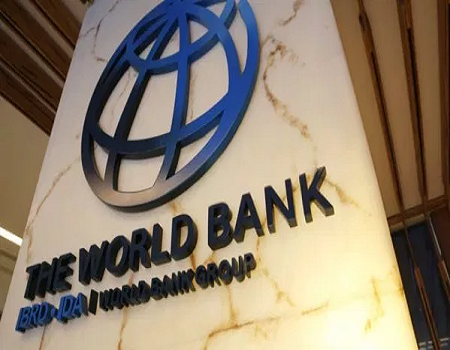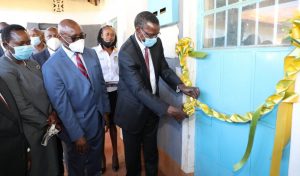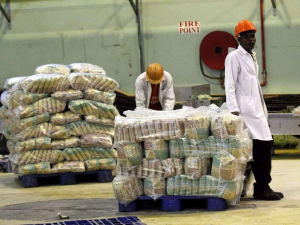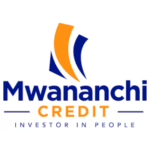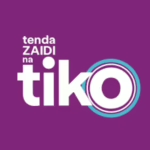World Bank Group headquarters in Washington D.C/ Courtesy.
NAIROBI, Kenya Mar 18- Kenya has received a $750 million (Sh85.8 billion) loan from the World Bank under its two-part tranche Development Policy Operation (DPO).
The new loan facility will support the country’s budget and drive fiscal, power, water and land reforms even as the costs on Eurobond double. It is aimed at bridging the huge budget deficit for Kenya’s post-Covid-19 economic recovery plan.
This is the second tranche granted to Kenya after the World Bank disbursed a similar amount in June last year under the DPO programme, which lends cash for budget support rather than financing specific projects.
The DPO is a loan series, through which the World Bank provides low-cost budget financing along with support to key policy and institutional reforms.
The World Bank said the concessional loan will have a 3 percent annual interest rate with $520 million lent through the International Development Association (IDA), having a 30-year maturity with a five-year grace period and $230 million through the International Bank for Reconstruction and Development’s (IBRD) with an 18.5-year maturity and a five-year grace period.
The funds are meant to help the economy recover from the effects of the Covid-19 pandemic by strengthening fiscal management, driving efficiency in the power sector as well as achieving environmental, land, water and healthcare reforms.
The bank said some of the funds will be channeled towards setting up an electronic procurement system for government procurement to improve transparency.
By the end of 2023, Kenya aims to have five strategically selected ministries, departments, and agencies, procuring all goods and services through the electronic procurement platform.
“The Government of Kenya has maintained the momentum to make critical reforms progress despite the disruption caused by the pandemic,” World Bank Country Director for Kenya Keith Hansen said.
She said the bank through the DPO, is pleased to support the efforts which will help Kenya sustain its strong economic growth performance and steer it towards inclusive and green development.
This comes as yields on the bonds, which have a maturity profile of between two and 26 years, have gone up by an average of 3.34 percentage points since June 2021. The highest rise has been on the seven-year paper maturing in 2027, which has nearly doubled from 4.8 percent to 9.17 percent.
“This funding is the second in a two-part series of development policy operations initiated in 2021. The total annual interest cost of the Kenya DPO is approximately 3.0per cent,” said Alex Sienaert, senior economist for the World Bank in Kenya.
Kenya is expected to ensure competitive pricing through a transparent, competitive auction-based system in the energy sector.
According to the World Bank, this has the potential to generate savings of about $1.1 billion (Sh125 billion) over ten years at current exchange rates.
The funds are also aimed at helping the country achieve higher taxes, expenditure cuts whilst preserving space for social spending and reforms to drive revenue growth.
Already, the risk assigned to Kenya’s sovereign bonds by international investors has gone up in the last nine months even before the Fed rate announcement. The country stands to pay higher interest if it floats a new Eurobond under the current market conditions.
Kenya agreed with the IMF to stick to concessional finance to reduce debt vulnerabilities that have seen the country turn away from syndicated loans and only focus on multilateral loans and Eurobonds.
Kenya is trying to balance its debt portfolio after a surge of commercial debts piled up and became expensive to repay taking up more than 63 percent of tax revenue.
Concessional and semi-concessional borrowing, including from the IMF and other multilaterals are part of the Treasury plan’ to limit reliance on external commercial borrowing in the coming years to reduce debt-related vulnerabilities.
By borrowing from the multilateral bodies, the IMF and the World Bank, Kenya has already cut dependence on the more expensive commercial loans.
According to Parliament Budget Office, cheaper World Bank and the International Monetary Fund (IMF) loans have reduced the average cost of Kenyan loans from 9.1 percent to 6.9 percent
The country’s total public debt was valued at Sh8.2 trillion as of December 31 last year. This means that the country’s debt to GDP ratio is at just above 76 percent.
Kenya’s economy staged a significant rebound in 2021, albeit with considerable variation in conditions across sectors.
The economy is expected to continue its strong recovery trajectory with a GDP growth projected to be 5.8 percent for 2022, and 5.5 percent on average in 2023–25.


